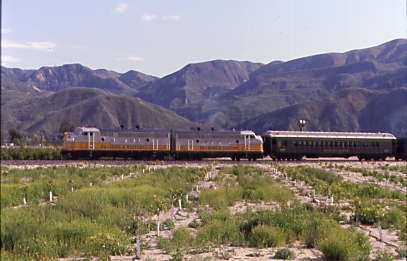
Southern Pacific passenger trains stopped using the Piru Station in 1938 and through service ended in 1953. A tunnel fire on the Coast Line returned Trains 97 and 98, the Coast Daylight, Trains 75 and 76, the Lark and Mail, and Trains 90 and 91 in early 1963. In March 1963, Golden West Tours ran a westbound trip over the line with four scarlet F-units and 14 cars. There may or may not have been others, but 43 years later, I would hopefully be on the first train to Piru.
Chris Parker and I had talked about going to Fillmore Railfest 2006. I also discussed it with my good friend Jeff Hartmann, but he was far too busy that weekend to get away. Since Chris lived in Torrance and offered to drive, I decided I should meet him somewhere nearby and the LA Metro Green Line station at Redondo Beach was the closest, so I would drive to Norwalk from Santa Ana, take the Green Line and meet him at the station at 7:30 AM.
I was up early in order to clean the house a little before leaving and had an easy drive on Interstate 5 to Norwalk, where I made my way to the Green Line station and purchased a day pass for $3.00
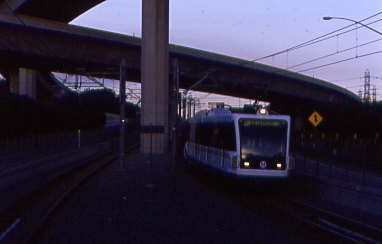
Down the middle of Interstate 105 came my single car train, which would become a Redondo Beach train. As we made our way west, it filled to standing room only. At the Rosa Parks station, the junction with the Blue Line, we gained far more passengers than we lost but most detrained at Aviation, transferring to the bus for Los Angeles International Airport. I continued on to Redondo Beach, where I detrained and as I walked across the elevated platform, spotted Chris and Jesus arriving at the parking lot. I took the passenger seat of the truck and we proceeded to Fillmore.

The train at the Redondo Beach Green Line station. I had done some research about Canadian Pacific Royal Hudson 2839 at the Nethercutt Collection and Museum, so we decided to see if we could photograph it. We drove to Sylmar and soon found the museum with the steam engine behind. We drove around to the front and saw some of the cars in their collection through the large front windows then went behind the building and across a lawn was the display.

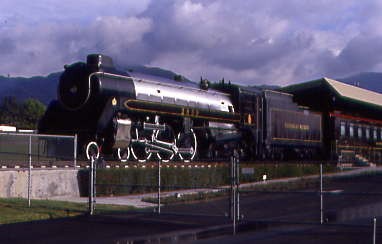
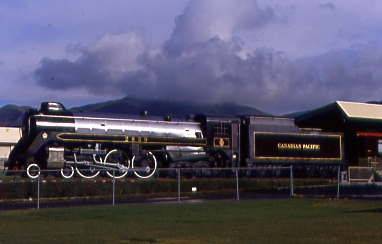
Canadian Pacific 4-6-2 2839 built by Montreal Locomotive Works in 1937. The CPR Hudsons were designed primarily for fast passenger service and could reach speeds of 90 mph with fifteen car passenger trains. They were extremely reliable in service, averaging 110,000 miles a year. In 1939, H-1-d 2850 was assigned to haul the train carrying King George VI and Queen Elizabeth from Quebec to Vancouver. 2851 also led a pilot train that proceeded the "Royal" train by one hour. Both locomotives were specially liveried for the assignment with Royal blue and silver paint, stainless steel boiler cladding, the royal arms painted on the tender and another crown painted on the skirt just ahead of the cylinders.
The locomotives acquitted themselves well on the 3,224 mile trip, apparently greatly impressing King George VI. After the tour, both were returned to the railroad's standard livery but, later, the CPR was given permission to place the crown on the skirts of its newer 4-6-4s (2820-2864) and to designate them "Royal" Hudsons. Retirements began in the 1950s, although some of the locomotives ran into the mid 1960s. 2389 last steamed in 1950 and was officially retired in 1959 after having run more than three million miles. In 1963, it was sold to the Government of Ontario and then, in 1969, to the Royal Hudson Company.
In 1972, 2389 was leased to the Atlantic Central Steam Railroad in Bath, Pennsylvania, where it was restored to full operation. It was then leased to the Southern Railway and briefly hauled passenger trains on the steam excursion program in 1979-80. However, it was not sufficiently powerful for the runs it was required to make and was subsequently leased to Historic Red Clay Valley Inc., in Greenbank, Delaware, and then Blue Mountain & Reading Railroad in Hamburg, Pennsylvania. The Blue Mountain and Reading tried to restore and run 2839 on excursions, but it was ultimately sold and went through a series of other owners before being purchased by the Nethercutt in 1999.
We then departed and at Castaic Junction, we left Interstate 5 for the twenty-mile drive to Fillmore. As we drove west, we looked for evidence of the former Southern Pacific right-of-way and passed through Piru and started scouting locations for the afternoon train's run from Fillmore to Piru.
Fillmore Railfest 2006The Fillmore and Western Railway is a railroad owned by the Fillmore and Western Railway Company. The company operates on track owned by the Ventura County Transportation Commission. The majority of F&W rolling stock was acquired from three major studios: 20th Century Fox, Paramount, Warner Bros and MGM. The rolling stock and right-of-way are frequently used for the filming of television series, motion pictures and commercials and as a locale for private and commercial still photography. Visitors to Fillmore often see filming activity as well as sets and support equipment at the company's rail yard and along the tracks between Santa Paula and Piru.
The F&W has been used in more than 400 movie, television and commercial shots. Movies shot on the railroad include "Throw Momma from the Train", "Three Amigos", "Seabiscuit", "Get Smart", "Rails & Ties" and "Race to Witch Mountain". Television series "CSI", "NCIS Los Angeles" and "Criminal Minds" have used the railroad for location shooting. The railway also featured in the documentary series "Mystery Diners" as "itself".
The railroad also operates a year-round tourist train and offers numerous special events, including the Railroad Days Festival, the Pumpkinliner, Christmas Tree Trains, the North Pole Express and the Day Out with Thomas. The normal schedule involves weekend excursions, dinner trains, murder mystery trains, barbecue trains and shopping excursions to nearby Santa Paula.
HistoryThe track is a standard gauge railroad constructed in 1887 by Southern Pacific Railroad through the Santa Clara River Valley in Ventura County, California. This line was originally part of the Southern Pacific's main line between San Francisco and Los Angeles before a shorter route was built through the Santa Susana Mountains in 1904. State Route 126 follows roughly the same route from Ventura to Santa Clarita. The track was used extensively by Southern Pacific as late as the 1950s to haul citrus from packing houses at the communities along the Santa Clara River. In 1989, the branch line that connects at its west end to the Union Pacific at Montalvo in Ventura was purchased from Southern Pacific by the Ventura County Transportation Commission. The eastern end of the line now terminates in Piru as storm damage in 1979 severed the eastern end of the line to Saugus in Los Angeles County.
Short Line Enterprises was a company that provided railcars for use in movie productions. They came to Fillmore in 1991 to use the rail line and eventually added tourist and dinner trains.
We found a place to park under a tree and went to the caboose to buy our tickets but it was yet open.
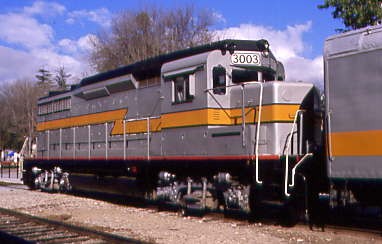
Fillmore & Western GP30 3003, ex. Arizona Central 3003, exx. Ohiio Central 4420, exxx. CSXT 4220, nee Chesapeake and Ohio 3026, built by Electro-Motive Division in 1963.
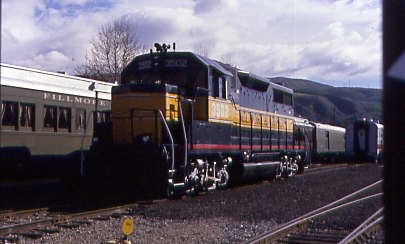
Fillmore & Western GP35 3502, ex. Arizona Central 3502, exx. Conrail 2339, exxx. Penn Central 2339, nee Pennsylvania Railroad 2339, built by Electro-Motive Division in 1965.

While I was waiting to buy a ticket, I walked over to the former Southern Pacific station built in 1887.
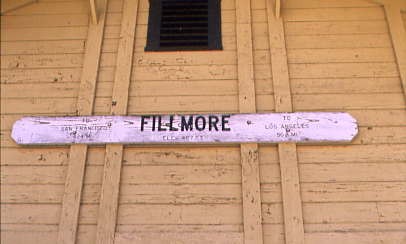
The station sign.
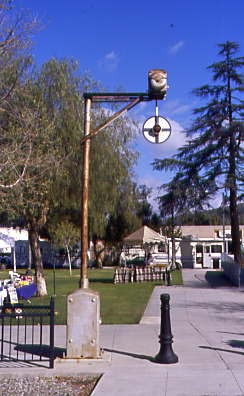
A wig-wag crossing signal.
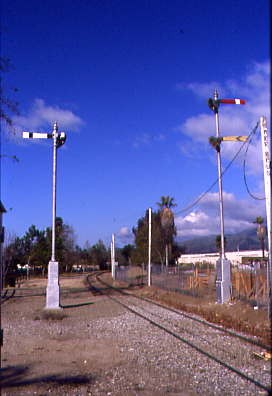
A semaphore signal just west of A Street. I returned to the caboose and bought my all-day rail ticket then continued to explore.

A line of cabooses, including Conrail 21362 and the second one being the ticket office.
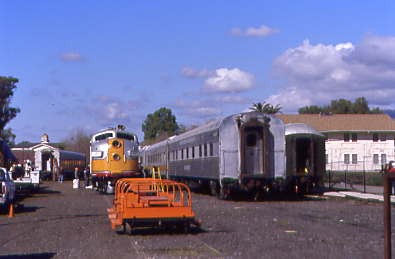
The speeders and the power for the first Piru trains.
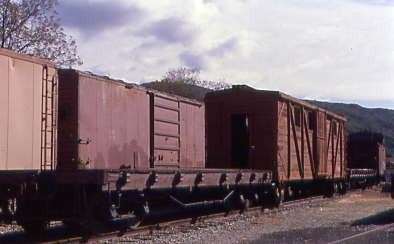
Freight cars used in films.
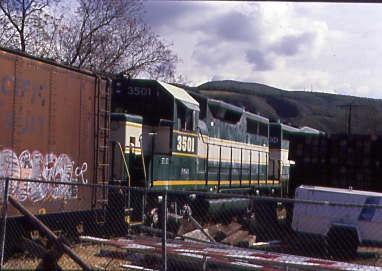
Fillmore Western GP35 3501, ex. Arizona and California 3501, exx. Conrail 2262, exxx. Penn Central 2262, nee Pennsylvania Railroad 2262, built by Electro-Motive Division in 1964.

Fillmore and Western GP30 3004, ex. Arizona Central 3004, exx. Ohio Central 4236, exx. CSXT 4236, nee Baltimore and Ohio 6914 built by Electro-Motive Division in 1962.
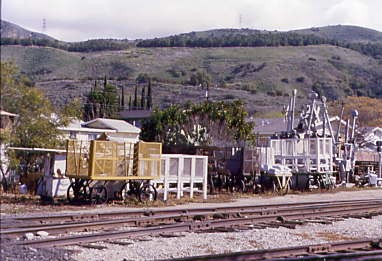
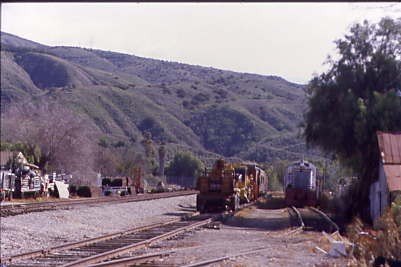
Baggage carts, equipment and other props used in many films.
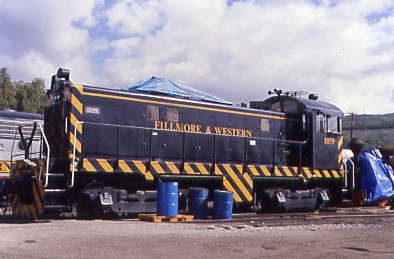
Fillmore and Western S-6 1059, ex. Ventura County 9, exx. Southern Pacific 1226, nee Southern Pacific 1059, built by American Locomotive Company in 1956.
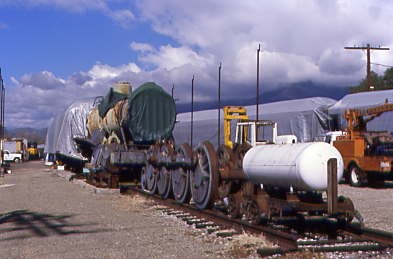
Fillmore and Western 2-8-0 14, nee Duluth and Northeastern 14, built by Baldwin in 1913.
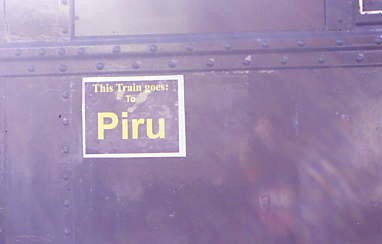
I finished my walking tour and return to meet Chris and Jesus.
The First Train to PiruWe waited to board and chose seats in the covered open car where we met our fellow passengers. Although the train was scheduled to leave at 10:00 AM, we did not departed until almost 10:25 AM, but that did not matter to us.
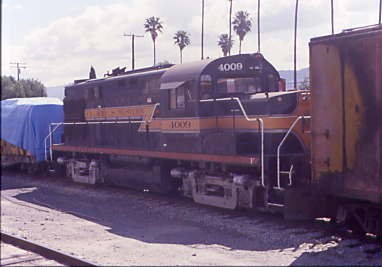
Fillmore and Western RS-32 4009, ex. Chrome Locomotive 4005, exx. Southern Pacific 4009, nee Southern Pacific 7309 built by American Locomotive Company in 1962.

Passing the former Arizona & California locomotives with palm trees.
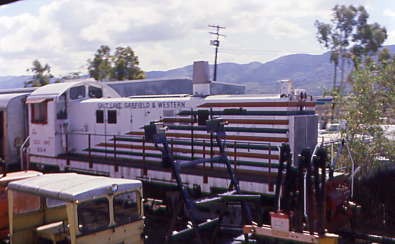
Salt Lake, Garfield and Western S-6 DS4, nee Southern Pacific 1040, built by American Locomotive Company in 1955.
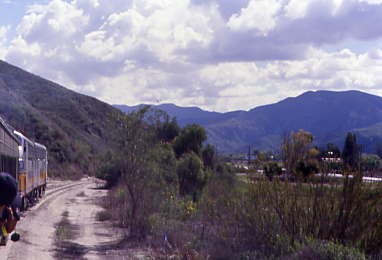
Once across Pole Creek, we proceeded east out of Fillmore.
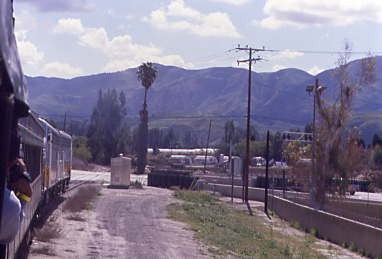
We crossed the highway for the first time on the way to Piru.

Our conductor punched my ticket.
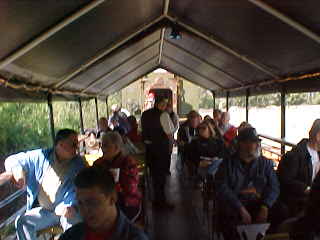
The covered open car in which we chose to sit.
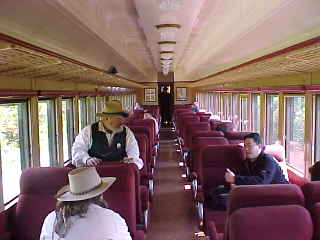
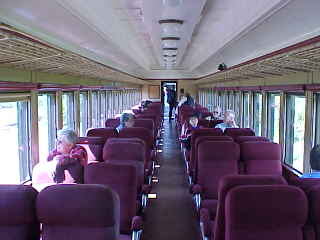
The forward coach.
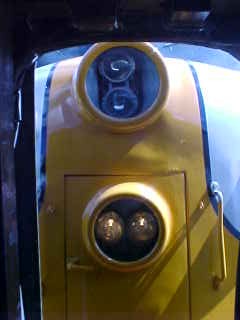
An interesting view of our rear locomotive's headlights.
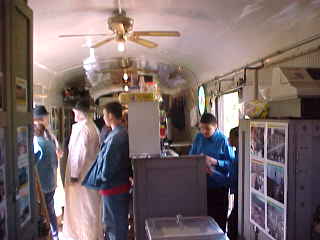
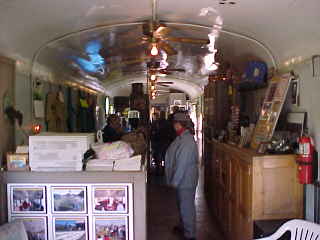
The Fillmore & Western snack and souvenir car.
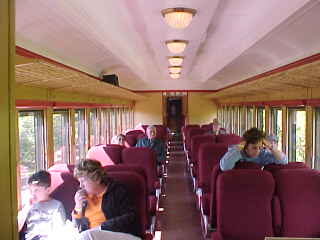
The rear coach.
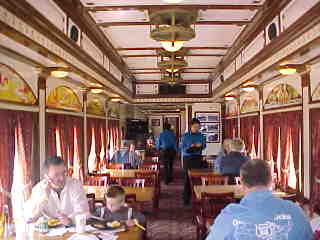
The dining car which was serving light meals today.
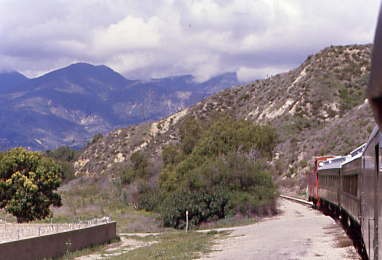
The view as we departed.
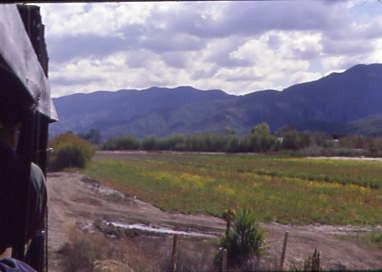
Rolling past a field.
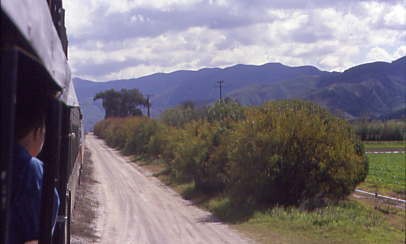
Some boundary bushes along the field with the mountains ahead.
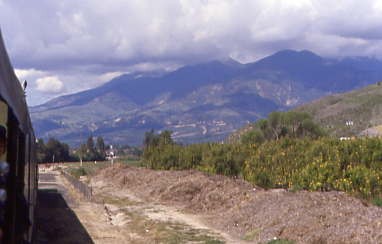
Another look back.
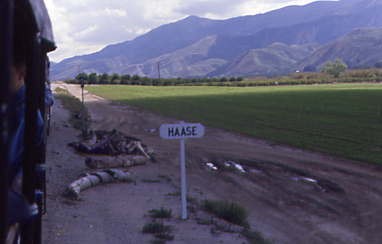
Haase station sign.
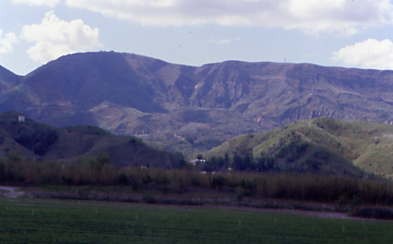
Mountains to the south.
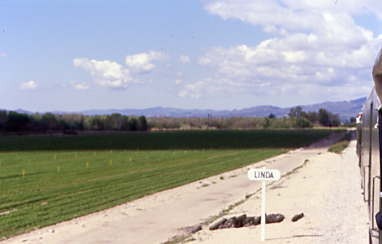
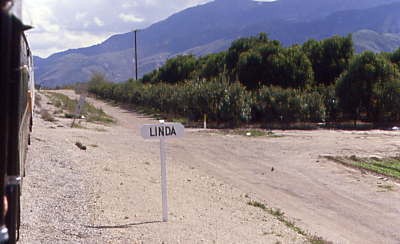
Passing through Linda.
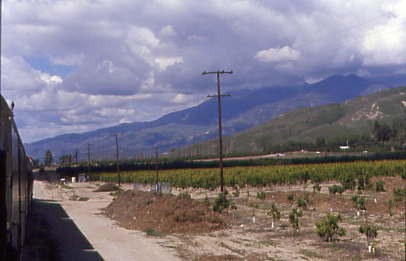
Young orange trees along our route.

Rolling through orange groves.
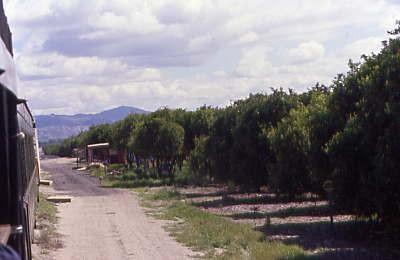
Icabod.



Between the orange trees not around them! Like the Rio Grande's old slogan, "Through the Rockies, not Around Them"
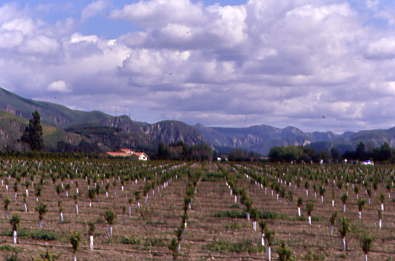
More new trees.
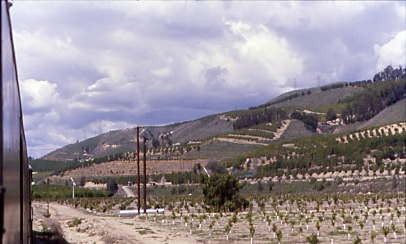
All the way up the hillside.
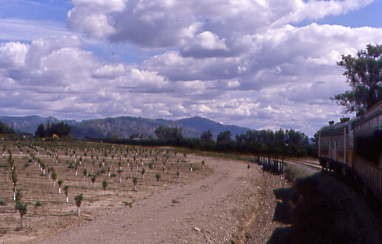
Rounding a big curve.
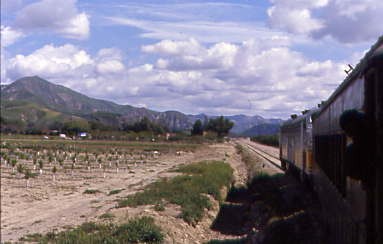
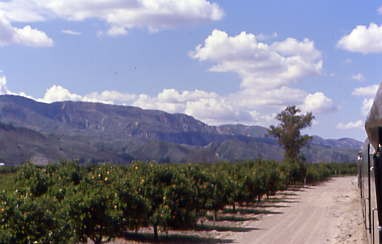
An unspoilt trip back through time in Southern California. Where I live in Santa Ana, I used to have an orange grove across the street until homes were constructed.
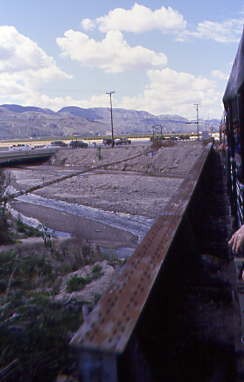
Crossing Hopper Creek.
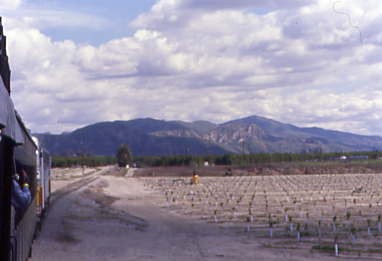
More newly-planted orange groves.
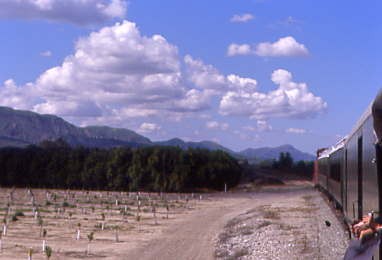
A look back.
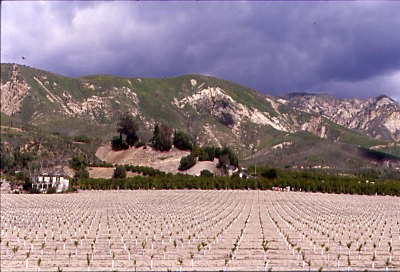
View to the north.
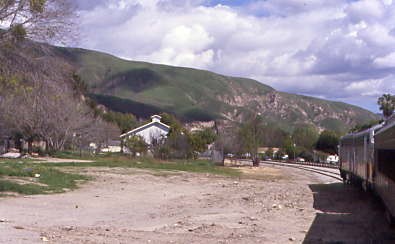
Curving into Piru.
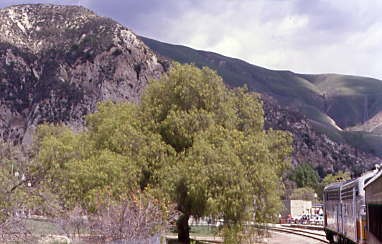
Our destination was behind this tree.
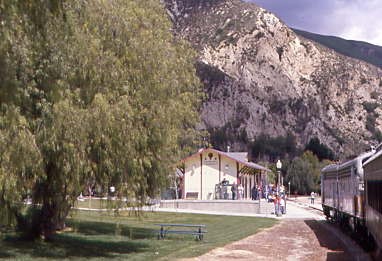
A ribbon through which the train would break, announcing our arrival in Piru.
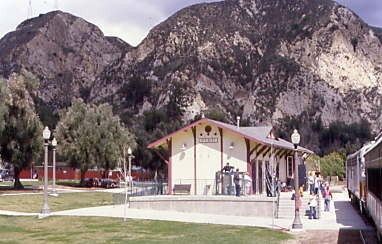
Almost at the station.
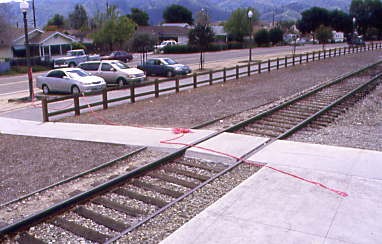
The ribbon the train had cut, signifying the first passenger train to arrive in Piru since 1963.
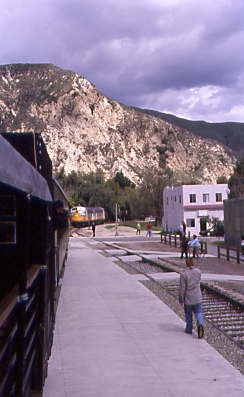
Our power was cut off the train in order to run around to lead it back to Fillmore.
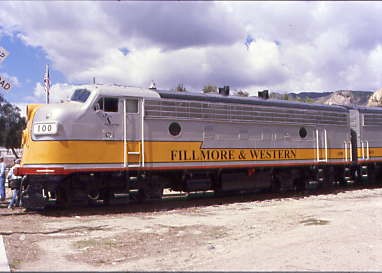

I detrained briefly to photograph Fillmore & Western F7A 100, ex. Maryland Midland 100, exx. Winchester and Western 100, exxx. Rails Diversified 410, exxxx. Metra 410, exxxxx. Chicago and North Western 410, nee Chicago and North Western 4068A, built by Electro-Motive Division in 1949 and Fillmore Western F7A 101, ex. Maryland Midland 101, exx. Winchester and Western 101, exxx. Rails Diversified 413, exxxx. Metra 413, exxxxx. Chicago and North Western 413, nee Chicago and North Western 4083A, built by Electro-Motive Division in 1949.
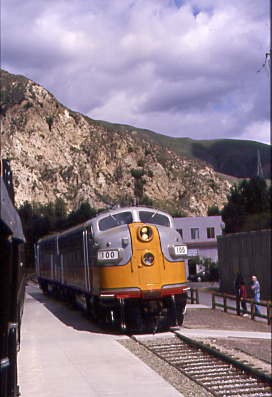
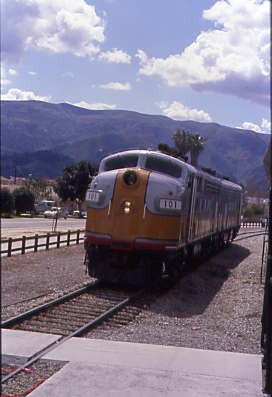
Our power running around the train.
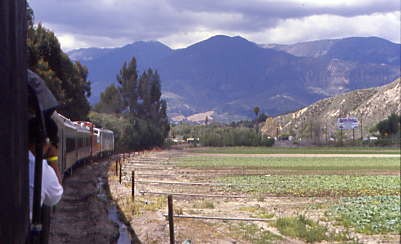
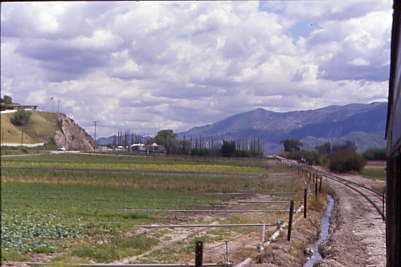
The start of our journey back.
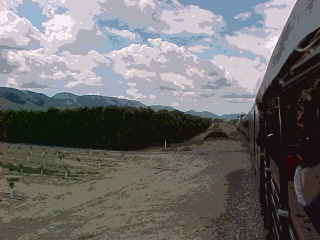
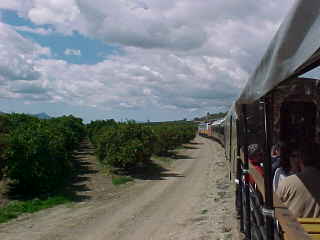
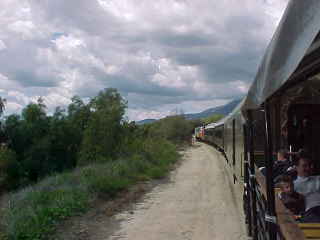
Views on the return.

Returning across the highway into Fillmore.
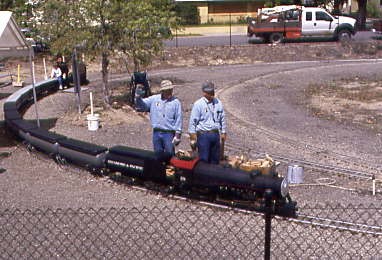
The Santa Clara Valley Live Steamers.
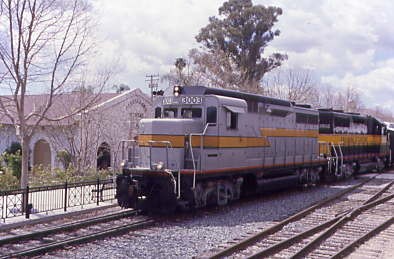
Fillmore and Western GP30 3003, the motive power for the next train to Piru.
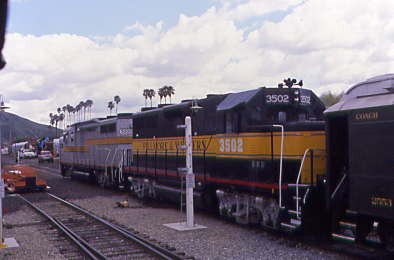
Fillmore & Western GP35 3502 as we arrived back.
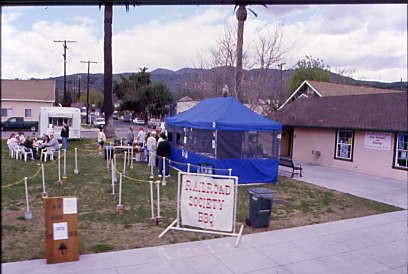
We all detrained and visited a tent for some excellent tri-tip sandwiches.
The Train to Santa Paula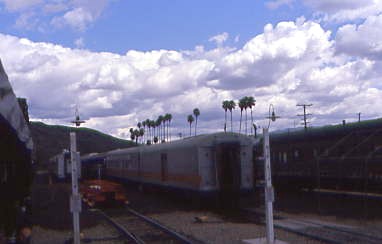
With our sandwiches in hand, the three of us reboarded the same trainset and again found a set of seats in the open car. Before we departed, the next train left bound for Piru.
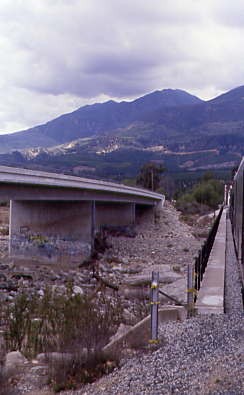
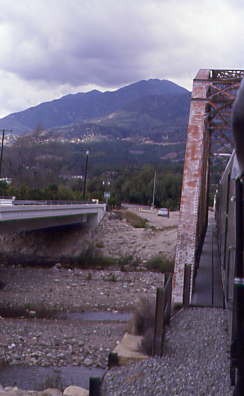
Crossing Sespe Creek.
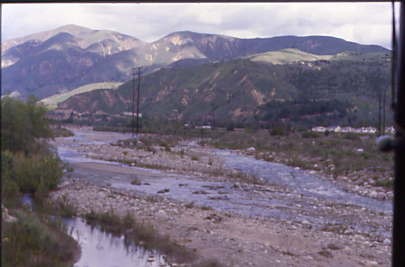
Sespe Creek.
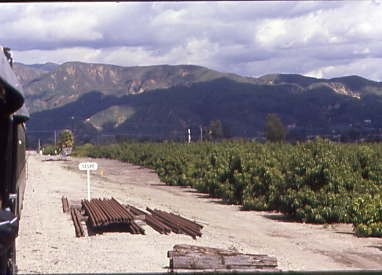
Sespe.
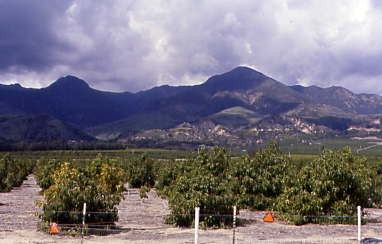
More orange groves.
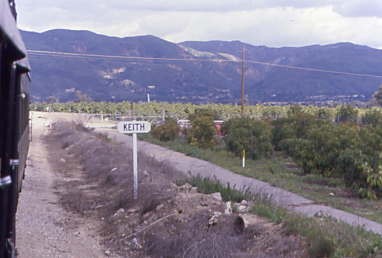
Keith.

Mountains to the north.
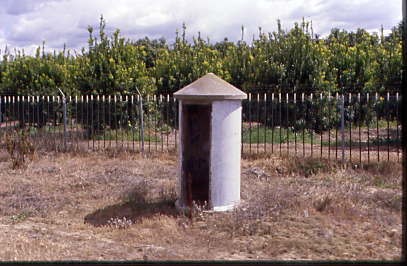
On old Southern Pacific phone booth.

Curving towards the mountain range to our south.
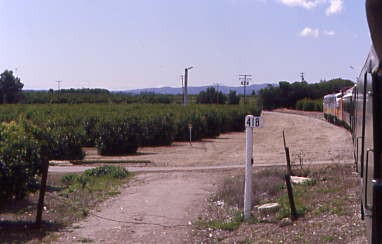
Milepost 48 as we neared Santa Paula.

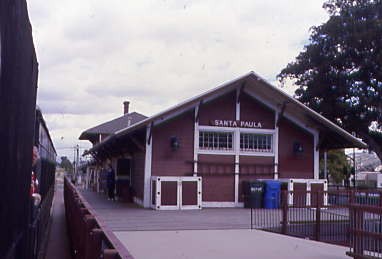
Southern Pacific Santa Paula station built in 1887.
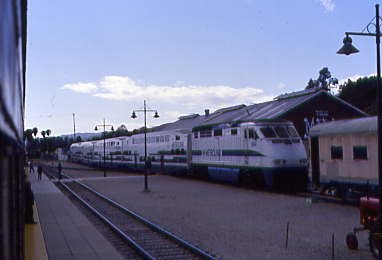
A Metrolink train on display.
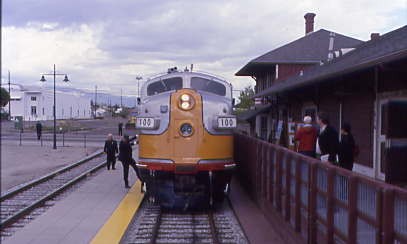
Our power ran around the train again and for the return trip, I went inside the forward coach as I had enough of the now cool air in the open car.
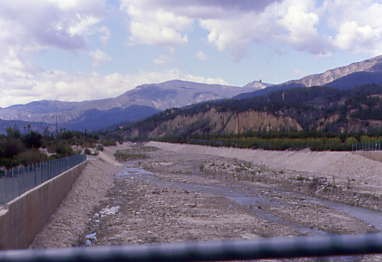
Santa Paula Creek. Chris had some really hot and spicy soup and I enjoyed a Fillmore Dog, Fritos and a Coca-Cola which took us most of the way back to Fillmore and the next thing I knew, we were crossing Sespe Creek and arriving back in town. Once we all detrained, we returned to Chris' truck and drove west to catch the train crossing the creek.
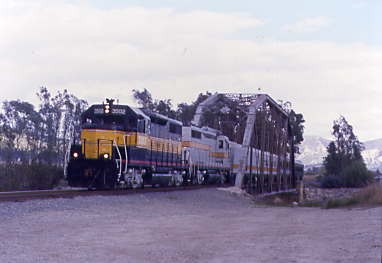
The Santa Paula Train at the truss bridge over Sespe Creek, after which we returned to the main highway exiting Fillmore in search of the Train to Piru.


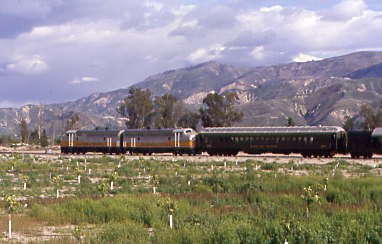
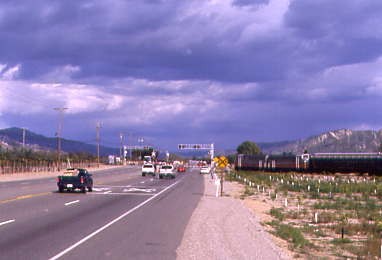
We caught up with the Piru train at the grade crossing just west of town and took our last pictures of the Fillmore and Western then returned to the car and drove back to Redondo Beach through a pair of rain showers before reaching a backed-up Interstate 405 in Santa Monica. Chris did a great job of driving and soon had me back at the Redondo Beach Green Line station, where we said our goodbyes.
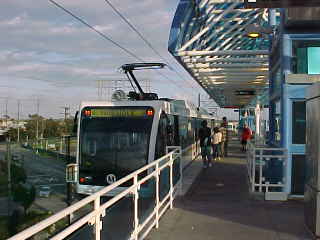
I walked upstairs just as a train was arriving to take me back to Norwalk and my car. It was interesting that one person on the trip was babbling the whole way, driving the other passengers crazy. We had a full train heading east and once at Norwalk, I was the first to detrain, walked to my car and battled the traffic on Interstate 5, returning home a very happy person after finally being able to ride a Fillmore & Western train to Piru.
| RETURN TO THE MAIN PAGE |